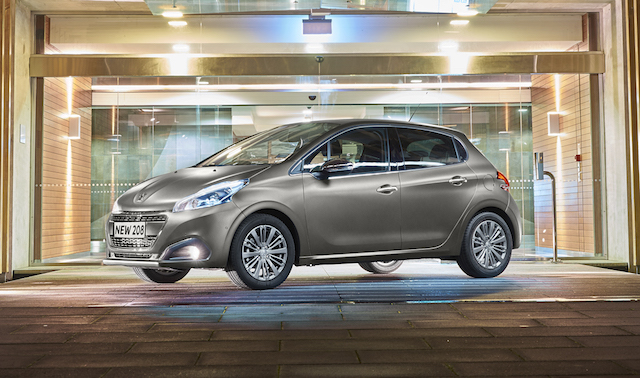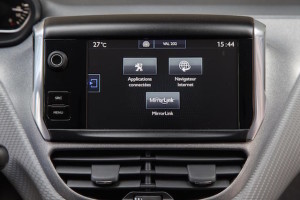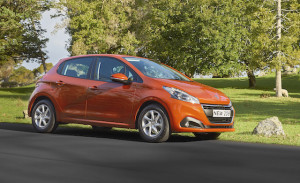
Peugeot has given its small 208 hatchback the mother of all mid-life makeovers, adding a new engine and gearbox, new colour palette, new technology, new design themes inside and out, and a new range of just two variants, called Active and Allure.
Gone is the four-speed automatic gearbox and the old turbocharged 1.2-litre three-cylinder engine, replaced by a six-speed auto ‘box and the boosted Euro6-rated three-pot Puretech engine, winner of the 1.0- to 1.4-litre category in the 2015 international engine of the year awards.
Gone, too, are seven of the nine models available since the 208 was launched here in 2012. “We needed to rationalise the range,” said Peugeot NZ divisional sales manager Simon Rose. “The 208 is a very important car for us and the two new key models give us a huge opportunity for conquest business.”

The range of 12 colours (nine standard and three $750 options) includes two new textured, or matt, options, Ice Grey and Ice Silver. Technology upgrades – standard and optional – run to a sensor-based self-braking system to help avoid low-speed collisions, software that mirrors the screen of a smartphone on the car’s 16cm touchscreen, electronic park assistance aid, and a reversing camera.
Peugeot has also freshened the face of the 208 with a wider grille and a new light assembly. Fog lights on the premium Allure get a cornering function. The rear on both models gets LED lights, too.
The 208 goes on sale on October 1. Rose expects the new look and new drivetrain to help boost 208 numbers, which accounted for 20 per cent of Peugeot’s 569 sales this year at the end of last month. “The 208 has been selling at an average of 13 units a month – we want to go to 15 to 20 sales a month with this new model,” he said.

Rose said the 208 Active ($26,990) will account for 30 per cent of sales and the Allure ($29,990) 70 per cent. The closer ties with Peugeot in Australia means other 208s would be available. “We can look to indent some models with Australia – that means we can get them but we don’t need to carry them,” he said.
The new gearbox and engine has breathed new life into what was a four-door mini with a reasonably good chassis but a dated drivetrain.
The old engine delivered 88kW at 6000rpm and 160Nm at 4250Nm. The new Puretech unit generates 81kW at 5500rpm and 205Nm from 1500rpm – a 45Nm boost that arrives 2750rpm earlier in the range than the 160Nm engine.
Never mind the 7kW drop in power, the torque delivery is the crucial improvement – much more oomph is available lower in the rev range. Coupled with the six-speed gearbox the new engine’s flexibility transforms the drive experience.
The only time it gets caught out is at speed through twisty stuff. Lift off the throttle going into a corner and the six-speeder momentarily falls into a hole searching for a suitable ratio to match throttle input as you exit.

Slipping the drive selector into manual mode and dropping down a cog or two cures that. Still, that’s not the way the 208 is meant to be driven. It’s more of a city-slicker. We deliberately tried to catch it out on a winding country road.
Another plus with the new drivetrain is the fuel economy. Peugeot claims a town-and-around best of 4.8 litres/100km (60mpg) – that’s 2 litres/100km better than the existing car’s 6.7 litres/100km.
The 208 has some tough competition in the small sector of the market in the form of the Ford Fiesta, Mazda2 and Honda Jazz, among others. But the six-speeder gives it obvious advantages over the Suzuki Swift and Toyota Yaris, for example, both using four-speed autos.
The new-look 208 deserves to be on the shopping list of every small car buyer, not only for its new drivetrain but its cabin layout. Called i-Cockpit in Peugeot-speak, it’s a combination of ergonomic factors built around a smaller steering wheel and an instrument panel that sits above the wheel itself. It’s clever.
